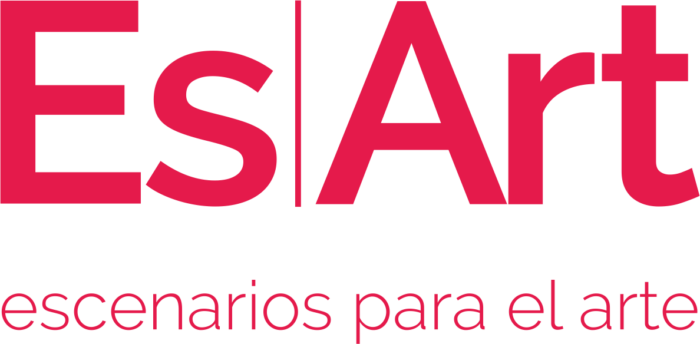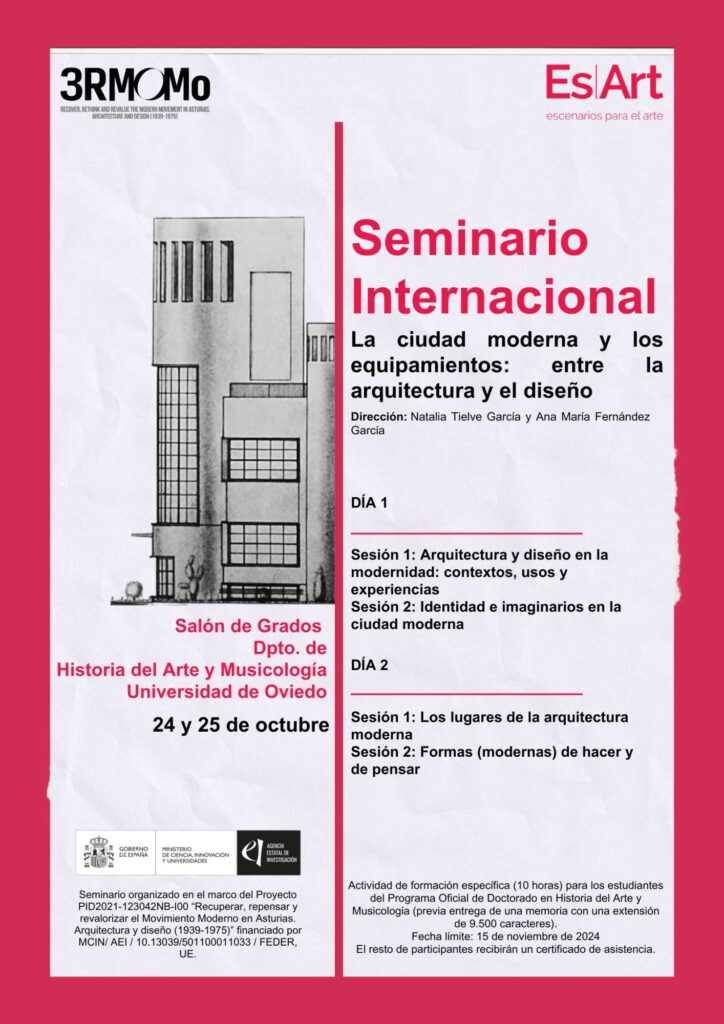
3RMoMo
Acronym
PID2021-123042NB-I00
Reference
01/09/2022 – 01/09/2025
Duration
Team and collaborators
Summary
Results
Relevance
Derived contributions
Congress and seminars
Transference
Resources
Team

Principal Investigators:
IP1. Natalia Tielve García, Professor of Art History, Universidad de Oviedo
IP2. Ana María Fernández García. Professor of Art History, Universidad de Oviedo
Research team:
Mª Carmen Bermejo Lorenzo. Professor of Art History, Universidad de Oviedo
Rodrigo Gutiérrez Viñuales, Professor of Art History, Universidad de Granada
Iñigo Sarriugarte Gómez, Professor of Art History, Universidad del País Vasco
Carla Fernández Martínez, Contracted Professor, Doctor, University of Oviedo
Renata Ribeiro Dos Santos, Contracted Professor, Doctor, Universidad de Oviedo
Enrique Meléndez Galán, Assistant Professor Doctor, Universidad de Oviedo
Work team:
Mª Fatima Teixeira Pombo, University of Aveiro
Massimo Visone, Università Degli Studi Di Napoli Federico II
Francesca Capano, Università Degli Studi Di Napoli Federico II
José Ramón Puerto Álvarez, COAA
Sonia Puente Landázuri, COAA
Rubén Dominguez Rodríguez, FPI predoctoral researcher, Universidad de Oviedo
Aida Villa Varela, investigadora predoctoral FICYT, Universidad de Oviedo
Santiago Rodríguez Pérez, investigador predoctoral FICYT, Universidad de Oviedo
Marina Castro Cabero, FPU predoctoral researcher, Universidad de Oviedo
Llara Fuente Corripio, predoctoral researcher, Universidad de Oviedo
Lucía Pérez Fernández, predoctoral researcher, Universidad de Oviedo
Patricia Fernández Pastor, predoctoral researcher and Archivist of the AMO
Marina Bargón García, Professor of Art History, Universidad de Oviedo
Olatz Ocerin-Ibáñez, architect, Universidad del País Vasco
Collaborators
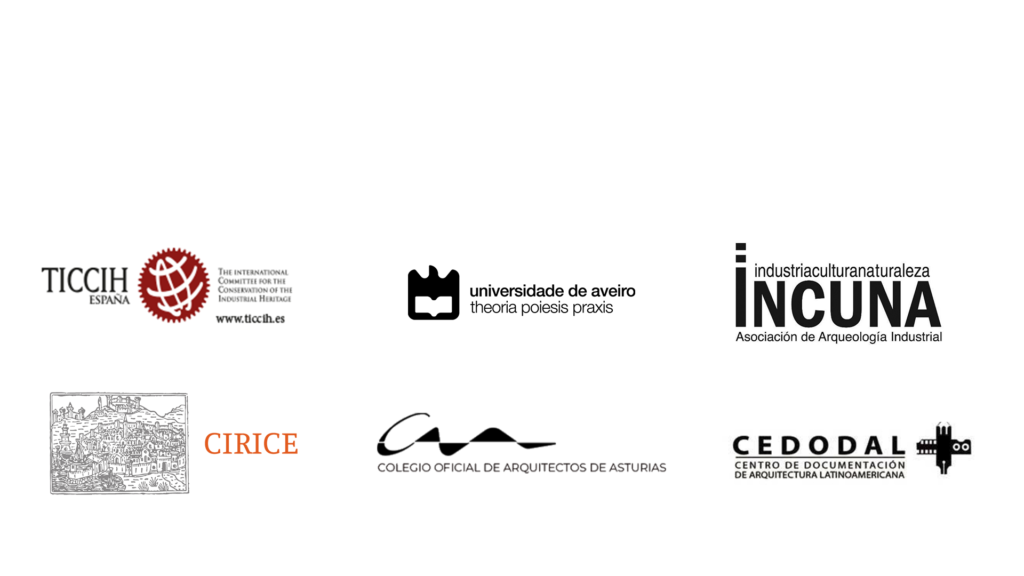
Summary

The project Recover, rethink and revalue the Modern Movement in Asturias. Architecture and Design (1939-1975) is dedicated to analyzing the process of receiving modern principles in Asturian design and architecture, incorporating a transversal, interdisciplinary and gender approach.
Its main objectives are:
- Address a joint study of architecture and design carried out in Asturias, providing a critical review that leads to the recovery and revaluation of the legacy of the Modern Movement
- Analyze the works, projects and achievements according to the different programs and typologies: housing, industry, education, leisure, transport, urban planning and urban equipment.
- Study of interior design, furniture and urban design. Case studies.
- Apply the gender approach by addressing issues related to daily life, identity, cultural practices and representativeness.
Results

The project responds to the need to advance scientific knowledge and quality research, filling a historiographic gap and providing a systematic and innovative study of the legacy of the Modern Movement in Asturias.
In accordance with the specific objectives of internationalization and dissemination, the project foresees:
- Strengthen collaboration with international research groups that maintain common lines of work in the field of architecture, urban planning and cultural heritage in Europe and America, in particular the Center for Documentation of Latin American Architecture (CEDODAL) and Centro Interdipartamentale di ricerca sull 'Iconography of the European city (CIRICE).
- Implement the publication of results and particularly in journals and publishers of recognized international prestige. Open publication will be sought, without economic, technological or legal barriers, through the institutional repository of the University of Oviedo, the REUNIDO, RECOLECTA platform and other similar repositories.
- Dissemination of online access results through the project website and the Industrial Heritage Docuweb. Portrait of a legacy.
- Encourage stays in international research centers with which exchanges are maintained (Nantes, Aveiro, Porto, Genoa, Naples) and incorporate new ones.
- Organization of international conferences and participation in international research seminars. At least two international congresses will be promoted (International Furniture Congress, UNAM 2022 and IV International Port, City and Heritage Seminar, 2024) and two research seminars. It is planned to participate in at least 9 international scientific events (International Conference on vernacular heritage; (IN)tangible heritage(S)+ Pedagogy CF; DoCoMoMo International Congress, UNAM Ibero-American Furniture Congress….)
- Development of two requests for European projects: Horizon 2030 Europe (Traditional crafts for the future: a new approach) and Interreg program (Conservatoire européen de politique préventive du patrimoine portuaire).
Potentially transferable results: the elaboration of diagnoses that collaborate in the conservation and protection of the assets and guide future interventions, master plans and proposals for rehabilitation, reconversion and musealization actions.
Relevance

The practical results that it aspires to achieve must guide future actions and contribute to the preservation of assets with respectful interventions, appropriate to their cultural values, in line with models and experiences promoted in other spaces, especially in the area of the Atlantic Arc, which they combine culture, creativity and sustainability.
In accordance with the specific transfer objectives, the project contemplates:
Encourage collaboration with the DoCoMoMo Ibérico Foundation, EPO of the project. Registration, documentation and study of assets of the Modern Movement in Asturias.
Develop seminars and workshops: Seminar on modern design in Asturias; work days on architecture and design in collaboration with the COAA and industrial heritage days with INCUNA, both EPO entities of the project.
Organize thematic exhibitions on design, architecture and industrial heritage in collaboration with COAA, INCUNA and Fundación ONCE.
Derived contributions

Artículos y capítulos de libros
En Urraco Solanilla, M. y Arrieta Castillo, C. (eds.), La transparencia. Sílex Universidad (Sílex Ediciones), 2024.
Fernández García, Ana María y Bermejo Lorenzo, Carmen. “José Antonio Menéndez HeviaIdea, Materia y Oficio [Catálogo de exposición].”
Fuente Corripio, Llara. “Arquitectura del Movimiento Moderno. Un enfoque desde la sostenibilidad de los materiales.”
En Tielve García, N. y Fernández García, A. M. (Coords.) La vivienda moderna: arquitectura y diseño. Universidad de Oviedo, CEDODAL, CIRICE, Research Institut for Design, Media and Culture [ID+] de la Universidade de Aveiro, CICEES, 2024.
En Tielve García, N. y Fernández García, A. M. (Coords.) La vivienda moderna: arquitectura y diseño. Universidad de Oviedo, CEDODAL, CIRICE, Research Institut for Design, Media and Culture [ID+] de la Universidade de Aveiro, CICEES, 2024.
En Tielve García, N. y Fernández García, A. M. (Coords.) La vivienda moderna: arquitectura y diseño. Universidad de Oviedo, CEDODAL, CIRICE, Research Institut for Design, Media and Culture [ID+] de la Universidade de Aveiro, CICEES, 2024.
En Tielve García, N. y Fernández García, A. M. (Coords.) La vivienda moderna: arquitectura y diseño. Universidad de Oviedo, CEDODAL, CIRICE, Research Institut for Design, Media and Culture [ID+] de la Universidade de Aveiro, CICEES, 2024.
En Tielve García, N. y Fernández García, A. M. (Coords.) La vivienda moderna: arquitectura y diseño. Universidad de Oviedo, CEDODAL, CIRICE, Research Institut for Design, Media and Culture [ID+] de la Universidade de Aveiro, CICEES, 2024.
En Tielve García, N. y Fernández García, A. M. (Coords.) La vivienda moderna: arquitectura y diseño. Universidad de Oviedo, CEDODAL, CIRICE, Research Institut for Design, Media and Culture [ID+] de la Universidade de Aveiro, CICEES, 2024.
En Tielve García, N. y Fernández García, A. M. (Coords.) La vivienda moderna: arquitectura y diseño. Universidad de Oviedo, CEDODAL, CIRICE, Research Institut for Design, Media and Culture [ID+] de la Universidade de Aveiro, CICEES, 2024.
Castro Cabero, Marina. “Vivienda y urbanismo en la obra del arquitecto Fernando Cavanilles Batalla.”
En Tielve García, N. y Fernández García, A. M. (Coords.) La vivienda moderna: arquitectura y diseño. Universidad de Oviedo, CEDODAL, CIRICE, Research Institut for Design, Media and Culture [ID+] de la Universidade de Aveiro, CICEES, 2024.
En Tielve García, N. y Fernández García, A. M. (Coords.) La vivienda moderna: arquitectura y diseño. Universidad de Oviedo, CEDODAL, CIRICE, Research Institut for Design, Media and Culture [ID+] de la Universidade de Aveiro, CICEES, 2024.
En Tielve García, N. y Fernández García, A. M. (Coords.) La vivienda moderna: arquitectura y diseño. Universidad de Oviedo, CEDODAL, CIRICE, Research Institut for Design, Media and Culture [ID+] de la Universidade de Aveiro, CICEES, 2024.
En Tielve García, N. y Fernández García, A. M. (Coords.) La vivienda moderna: arquitectura y diseño. Universidad de Oviedo, CEDODAL, CIRICE, Research Institut for Design, Media and Culture [ID+] de la Universidade de Aveiro, CICEES, 2024.
En Tielve García, N. y Fernández García, A. M. (Coords.) La vivienda moderna: arquitectura y diseño. Universidad de Oviedo, CEDODAL, CIRICE, Research Institut for Design, Media and Culture [ID+] de la Universidade de Aveiro, CICEES, 2024.
En Tielve García, N. y Fernández García, A. M. (Coords.) La vivienda moderna: arquitectura y diseño. Universidad de Oviedo, CEDODAL, CIRICE, Research Institut for Design, Media and Culture [ID+] de la Universidade de Aveiro, CICEES, 2024.
En Tielve García, N. y Fernández García, A. M. (Coords.) La vivienda moderna: arquitectura y diseño. Universidad de Oviedo, CEDODAL, CIRICE, Research Institut for Design, Media and Culture [ID+] de la Universidade de Aveiro, CICEES, 2024.
En Tielve García, N. y Fernández García, A. M. (Coords.) La vivienda moderna: arquitectura y diseño. Universidad de Oviedo, CEDODAL, CIRICE, Research Institut for Design, Media and Culture [ID+] de la Universidade de Aveiro, CICEES, 2024.
En Tielve García, N. y Fernández García, A. M. (Coords.) La vivienda moderna: arquitectura y diseño. Universidad de Oviedo, CEDODAL, CIRICE, Research Institut for Design, Media and Culture [ID+] de la Universidade de Aveiro, CICEES, 2024.
En Tielve García, N. y Fernández García, A. M. (Coords.) La vivienda moderna: arquitectura y diseño. Universidad de Oviedo, CEDODAL, CIRICE, Research Institut for Design, Media and Culture [ID+] de la Universidade de Aveiro, CICEES, 2024.
En: Actas 25 Jornadas Internacionales de Patrimonio Industrial.
En (prólogo Natalia Tielve): José Antonio Muñiz y su contribución a la recuperación de la modernidad en Asturias. CEAG.
Capano, Francesca. “La saggistica sull’architettura moderna e sulla città”.
En per Cesare de Seta, eds. A. Buccaro, L. Di Mauro, M. Visone, Napoli, Arte’m, pp. 65-70
En: Beck, Ana Lúcia; Bueno Godoy, Patrícia y Duarte-Feitoza y Paulo Henrique (eds.) Mulheres artistas? Mulheres artistas!. Goiás: CEGRAF, Universidade Federal de Goiás.
Gutiérrez Viñuales, Rodrigo. “Relecturas del pasado: fuentes amerindias en el arte contemporáneo”.
En: Lomba Serrano, Concha (ed.). Relecturas del pasado. Reflexiones sobre el gusto. Zaragoza: Universidad de Zaragoza, 2023.
Gutiérrez Viñuales, Rodrigo. “El Fogón de los Arrieros”.
En: Pujal, Juan (ed.). Imágenes de la arquitectura de Resistencia (1878-1951). Resistencia. Edición del autor, 2023.
En: Ostyn (Ed.): Women in Architecture. Documents & Histories. Rotterdam: Nai010 publishers, pp 72-85, 2023.
En: Phi. Revista do Patrimonio Historico-cultural Iberoamericano, nº 17, pp. 228-264, 2024.
Madrid: Fundación Juan March.
Méndez, Patricia. “Delirios arquitectónicos”.
En: Utopías de Buenos Aires. Buenos Aires: CEDODAL/FNA/OEI/BCNA, p. 48, 2023.
Méndez, Patricia. “Conexiones internacionales”.
En: Utopías de Buenos Aires. Buenos Aires: CEDODAL/FNA/OEI/BCNA, 2023.
En Arenal. Revista de Historia de Mujeres. Vol. 30, nº 2, pp. 417-445, 2023.
Tielve García, Natalia. “Hereditas para bellum: el patrimonio de las fábricas de armas en España”.
Villa Varela, Aida. “Industria y diseño. La integración de las artes en Ensidesa”.
In Res Mobilis, 12(17), 164–182.
En Ensidesa el uso de arquitectura de estilo racionalista es evidente, así como la pretensión de dignificación de la mayoría de las edificaciones levantadas. Dicha voluntad se traduce en la inclusión de diversos elementos artísticos, en su mayoría alusivos al proceso industrial desarrollado en el inmueble al que acompañan. Tanto el empleo del racionalismo arquitectónico como el diseño integral de las edificaciones fue una constante en las industrias nacionales —programa estratégico desarrollado por el franquismo dentro del que se inscribe Ensidesa—.
En el caso de los edificios de Hornos de Fosa y Naves de Laminación la pretensión de integrar las artes como parte del diseño de las naves industriales es más que notable, materializándose en la inclusión de tres murales de influencia neoplasticista en los tímpanos.
In Res Mobilis, 12(17), 112–146.
En las centrales hidroeléctricas diseñadas por los arquitectos Joaquín Vaquero Palacios e Ignacio Álvarez Castelao a las que se dedica este trabajo, se logra una excepcional concurrencia entre industria y modernidad. Se trata de unas obras singulares, de indiscutible interés histórico y técnico, cuidadosamente planificadas, ubicadas en parajes espectaculares y mimadas al extremo en todos sus detalles. Fruto de la alianza entre arquitectura, ingeniería, diseño, pintura y escultura, se convierten en creaciones donde la integración de las artes es un hecho y una razón de ser.
Meléndez Galán, Enrique et al. “Luz, metal y color para conformar una identidad: apuntes e hipótesis sobre las vidrieras y la plástica de Joaquín Vaquero Palacios para la sede social de Hidroeléctrica del Cantábrico”.
In Res Mobilis, 12(17), 71–111.
El presente escrito tiene como objetivo ahondar en la vertiente más plástica de la obra del arquitecto Joaquín Vaquero Palacios a través del análisis de las vidrieras del cuerpo de escalera realizadas para la Sede Social de Hidroeléctrica del Cantábrico en Oviedo. Esto permitirá abordar el diálogo establecido entre continente y contenido, tan interesante siempre en las obras del arquitecto asturiano en esa idea de “integración” que tantas veces se ha abordado en su historiografía. A través de un análisis de la iconografía empleada en estas vidrieras, así como en otros aspectos plásticos, podremos aproximarnos al interés de este artista por potenciar la semántica de un edificio no solo como representante de una compañía eléctrica, sino como representante de toda una geografía.
In Res Mobilis, 12(17), 183–199.
Este trabajo explora el diseño colaborativo entre el neoartesano y carpintero Rafa Martín, afincado y con taller en un entorno rural del occidente asturiano, y el arquitecto Julio Valle, quien colabora a su vez con su hija María en el estudio Valle Arquitectura. A través de sus creaciones podemos percibir en el diseño de interiores y de mobiliario, la incorporación de lo contemporáneo a lo tradicional dando lugar a piezas unitarias y singulares. Asimismo, este trabajo nos permite e invita a profundizar sobre cuestiones de relevancia actual, como la vuelta a los materiales locales y sostenibles o la recuperación de elementos del patrimonio rural, siempre aportando desde una visión novedosa, impulsando nuevos enfoques estéticos y nuevas formas de hacer.
In Res Mobilis, 12(17), 200–223.
Este trabajo quiere visibilizar el papel de las mujeres en el ámbito del diseño de interiores a través de la figura de una profesional que, desde los años sesenta, ha ejercido su profesión ininterrumpidamente en Asturias. Su trayectoria sintetiza las dificultades en el ejercicio laboral y en el reconocimiento público de una persona formada en decoración y que, apoyada por otras mujeres en igual o parecida situación, ha podido abrirse un hueco profesional. Su biografía ejemplifica los cambios de consideración de los profesionales de la decoración en los últimos cincuenta años en España, los recursos para la superación de las sucesivas crisis económicas y las estrategias para afianzarse en el sector de la construcción, tradicionalmente vinculado a los hombres.
Domínguez Rodríguez, Rubén. «Arte e industria en Asturias: Una aproximación a la obra de Luis Suco-Sánchez».
In Res Mobilis, 12(17), 147–163.
El arte y la industria están estrechamente vinculados desde los albores de la industrialización. En Asturias, las promociones fabriles han desarrollado desde el siglo XVIII y hasta la actualidad interesantes intervenciones artísticas en los espacios de trabajo y, además, han propiciado el surgimiento de nuevos materiales e iconografías acordes a los nuevos tiempos. En este estudio se ofrece una aproximación a la obra de Luis Suco-Sánchez a través de cuatro mosaicos de gran formato y temática industrial, realizados a mediados del siglo XX. Obras, todas ellas, presentes en espacios vinculados a la minería y la siderurgia, tales como el Pozo Fondón (Sama, Llangréu/Langreo) y la Escuela de Maestría Industrial (Avilés).
In Res Mobilis, 12(17), 38–70.
El objetivo de esta investigación es identificar y definir las características del diseño de interiores propuesto por los arquitectos en Asturias desde 1939 hasta 1975 a partir del análisis de la prolija creación de Julio Galán Gómez y en particular del edificio para Colegio de Médicos de Oviedo. Para ello, hemos estudiado las invariantes de sus propuestas, la participación en sus creaciones de artistas, talleres y casa comerciales de renombre nacional o internacional.
Ocerin-Ibáñez, Olatz. «Margarita Mendizábal, vivienda social y participación: Dos proyectos en Madrid.»
In Patrimonio Mundial. Sitios industriales y obra pública, INCUNA, 2023.
Planning Perspectives, Vol. 38 (2023): 1-25.
This book, Symbolic appropriation of public and domestic spaces. Studies from the History of Art and Cultural Heritage, collects different original works dedicated to this topic by members of the accredited research group EsArt of the University of Oviedo. In the different chapters of this collective work, the processes of construction and appropriation of space are addressed from a polyhedral perspective that starts from the semiotics of Art, but is enriched with the methodological contribution of other disciplines such as anthropology or sociology. The book deals with attachments to the place that is inhabited, the tensions between the public and the private, the identity redefinition of both the monument and the city in Spain and Latin America, urban iconography as evidence of changes in urban space or of the space for the memory of the Asturian monarchy that was achieved in the Jardín de los Reyes Caudillos in Oviedo. Important changes in the relationship with death in 21st century society are also analyzed through cemeteries, the role of sculpture in the redefinition of public space in recent decades and Alejandro Ferrant's work in the Spanish Protectorate in Morocco. In the part dedicated to the meanings of the private spaces, the book includes the interference between the private and the public in architecture without architects, the creative discourses related to the domestic in current artistic practices, the factory space as an enclosure, the schools linked to industrialization during Franco's dictatorship and, finally, the transformations of rural housing in Asturias since the end of the 19th century and the gestation of an imaginary of rurality that has been maintained until today.
Bargón García, Marina y Lozano-Bartolozzi, M. D. M. L. «El Silo de Trujillo, un ejemplo de arquitectura industrial en la penillanura trujillano-cacereña».
In Symbolic appropriation of public and domestic spaces, editado por Fernández García, Ana María y Álvarez Martínez, Soledad, 151-181. Gijón: Trea, 2023.
simbólica de los espacios públicos y domésticos. Estudios desde la Historia del Arte y el Patrimonio Cultural, collects different original works dedicated to this topic by members of the accredited research group EsArt of the University of Oviedo. In the different chapters of this collective work, the processes of construction and appropriation of space are addressed from a polyhedral perspective that starts from the semiotics of Art, but is enriched with the methodological contribution of other disciplines such as anthropology or sociology. The book deals with attachments to the place that is inhabited, the tensions between the public and the private, the identity redefinition of both the monument and the city in Spain and Latin America, urban iconography as evidence of changes in urban space or of the space for the memory of the Asturian monarchy that was achieved in the Jardín de los Reyes Caudillos in Oviedo. Important changes in the relationship with death in 21st century society are also analyzed through cemeteries, the role of sculpture in the redefinition of public space in recent decades and Alejandro Ferrant's work in the Spanish Protectorate in Morocco. In the part dedicated to the meanings of the private spaces, the book includes the interference between the private and the public in architecture without architects, the creative discourses related to the domestic in current artistic practices, the factory space as an enclosure, the schools linked to industrialization during Franco's dictatorship and, finally, the transformations of rural housing in Asturias since the end of the 19th century and the gestation of an imaginary of rurality that has been maintained until today.
In this writing, a brief review of some teaching activities elaborated with geolocation tools, elaborated with the objective of bringing the artistic and cultural environment closer to the students in a creative and collaborative way, is made.
This book, Symbolic appropriation of public and domestic spaces. Studies from the History of Art and Cultural Heritage, collects different original works dedicated to this topic by members of the accredited research group EsArt of the University of Oviedo. In the different chapters of this collective work, the processes of construction and appropriation of space are addressed from a polyhedral perspective that starts from the semiotics of Art, but is enriched with the methodological contribution of other disciplines such as anthropology or sociology. The book deals with attachments to the place that is inhabited, the tensions between the public and the private, the identity redefinition of both the monument and the city in Spain and Latin America, urban iconography as evidence of changes in urban space or of the space for the memory of the Asturian monarchy that was achieved in the Jardín de los Reyes Caudillos in Oviedo. Important changes in the relationship with death in 21st century society are also analyzed through cemeteries, the role of sculpture in the redefinition of public space in recent decades and Alejandro Ferrant's work in the Spanish Protectorate in Morocco. In the part dedicated to the meanings of the private spaces, the book includes the interference between the private and the public in architecture without architects, the creative discourses related to the domestic in current artistic practices, the factory space as an enclosure, the schools linked to industrialization during Franco's dictatorship and, finally, the transformations of rural housing in Asturias since the end of the 19th century and the gestation of an imaginary of rurality that has been maintained until today.
Domínguez Rodríguez, Rubén y Tielve García, Natalia. “El espacio de la industria: la fábrica como máquina envolvente. Arquitectura, experiencia y memoria».
This book, Symbolic appropriation of public and domestic spaces. Studies from the History of Art and Cultural Heritage, collects different original works dedicated to this topic by members of the accredited research group EsArt of the University of Oviedo. In the different chapters of this collective work, the processes of construction and appropriation of space are addressed from a polyhedral perspective that starts from the semiotics of Art, but is enriched with the methodological contribution of other disciplines such as anthropology or sociology. The book deals with attachments to the place that is inhabited, the tensions between the public and the private, the identity redefinition of both the monument and the city in Spain and Latin America, urban iconography as evidence of changes in urban space or of the space for the memory of the Asturian monarchy that was achieved in the Jardín de los Reyes Caudillos in Oviedo. Important changes in the relationship with death in 21st century society are also analyzed through cemeteries, the role of sculpture in the redefinition of public space in recent decades and Alejandro Ferrant's work in the Spanish Protectorate in Morocco. In the part dedicated to the meanings of the private spaces, the book includes the interference between the private and the public in architecture without architects, the creative discourses related to the domestic in current artistic practices, the factory space as an enclosure, the schools linked to industrialization during Franco's dictatorship and, finally, the transformations of rural housing in Asturias since the end of the 19th century and the gestation of an imaginary of rurality that has been maintained until today.
Fernández García, Ana María. «El hogar y lo doméstico en las prácticas artísticas actuales».
This book, Symbolic appropriation of public and domestic spaces. Studies from the History of Art and Cultural Heritage, collects different original works dedicated to this topic by members of the accredited research group EsArt of the University of Oviedo. In the different chapters of this collective work, the processes of construction and appropriation of space are addressed from a polyhedral perspective that starts from the semiotics of Art, but is enriched with the methodological contribution of other disciplines such as anthropology or sociology. The book deals with attachments to the place that is inhabited, the tensions between the public and the private, the identity redefinition of both the monument and the city in Spain and Latin America, urban iconography as evidence of changes in urban space or of the space for the memory of the Asturian monarchy that was achieved in the Jardín de los Reyes Caudillos in Oviedo. Important changes in the relationship with death in 21st century society are also analyzed through cemeteries, the role of sculpture in the redefinition of public space in recent decades and Alejandro Ferrant's work in the Spanish Protectorate in Morocco. In the part dedicated to the meanings of the private spaces, the book includes the interference between the private and the public in architecture without architects, the creative discourses related to the domestic in current artistic practices, the factory space as an enclosure, the schools linked to industrialization during Franco's dictatorship and, finally, the transformations of rural housing in Asturias since the end of the 19th century and the gestation of an imaginary of rurality that has been maintained until today.
Ocerin-Ibáñez, Olatz. «Arquitectas y Vivienda social Euskadi (1956-1996). De la titulación de Margarita Mendizábal a las primeras viviendas sociales diseñadas por arquitectas en Euskadi».
El siguiente artículo recoge parte del recorrido de la investigación “Arquitectas Euskadi / Euskal Herriko emakumezko arkitektoak” iniciada a comienzos de 2020 gracias a la subvención del Departamento de Planificación Territorial, Vivienda y Transporte del Gobierno Vasco dentro del convenio existente con la Escuela Técnica Superior de Arquitectura de la UPV/EHU. El texto parte de la titulación en 1956 de Margarita Mendizábal, la primera arquitecta de origen vasco, para establecer una perspectiva general de la presencia de arquitectas en Euskadi contextualizada en uno de los ámbitos de mayor relevancia de la arquitectura, la vivienda social. Desde 2020 y hasta el verano de 2022 no hubo avances significativos en la investigación sobre la primera arquitecta vasca Margarita Mendizábal. Se contaba, con la documentación antes mencionada que la tesis de Vílchez Luzón aportaba sobre la gasteiztarra. No obstante, la figura de su padre el ingeniero Alejandro Mendizábal aportaba un referente que pudo haber introducido la arquitectura al mundo infantil de Margarita. Lo cierto es que un giro inesperado a finales de verano de 2022 nos permitió conocer y compartir charlas y tiempo familiar con Margarita con el consiguiente acceso a su archivo profesional. Parte de la documentación recopilada y estudiada se presenta en este volumen de manera inédita en este primer texto. Como se verá, desde la titulación en 1956 de la arquitecta gasteiztarra hasta prácticamente el inicio de la década de los setenta del pasado siglo XX no hay presencia de arquitectas en Euskadi. Veremos cómo la creación a mediados de los setenta de la Escuela Técnica Superior de Arquitectura de San Sebastián activó el acceso femenino a la arquitectura. No obstante, gracias a la documentación aportada desde la Dirección de Vivienda, Suelo y Arquitectura del Gobierno Vasco, se ha podido contrastar que, hasta el cambio democrático de primeros de los ochenta del pasado siglo, las arquitectas no accedieron a proyectos de vivienda social en Euskadi. En ese sentido, el acceso a los archivos sobre vivienda social promovida por el Gobierno Vasco han sido otra fuente imprescindible para la contextualización de la presencia de esa genealogía de arquitectas ejercientes en Euskadi en el ámbito público. Precisamente desde este mismo ámbito, se han dado diversos avances de manera muy reciente respecto a la arquitectura y la perspectiva de género en Euskadi. Entre ellos es de destacar la aprobación del “Decreto 80/2022, de 28 de junio, de regulación de las condiciones mínimas de habitabilidad y normas de diseño de las viviendas y alojamientos dotacionales en la Comunidad Autónoma del País Vasco” que recoge, de manera pionera, la inclusión de la perspectiva de género como herramienta de diseño transversal en las viviendas colectivas de promoción pública. Unas herramientas de diseño que, como se verá, son similares a demandas publicadas a mediados de los sesenta por Elena Arregui, la segunda arquitecta de origen vasco.
Ocerin-Ibáñez, Olatz. «Arquitectas proyectando y construyendo Euskadi».
Servicio Editorial de la Universidad del País Vasco, 2023.
La recopilación de textos que se presentan en este volumen bajo el título “Arquitectas Proyectando y Construyendo Euskadi” es el resultado del recorrido de la investigación “Arquitectas Euskadi / Euskal Herriko emakumezko arkitektoak” dirigida por la arquitecta y profesora Olatz Ocerin Ibáñez. El primer texto es reflejo de dicha investigación donde la autora parte de la arquitecta nacida en Vitoria-Gasteiz Margarita Mendizábal quien, con su titulación en 1956, se convirtió en la primera arquitecta de origen vasco. Aportando documentación inédita sobre el trabajo profesional de esta pionera gasteiztarra, la autora establece una perspectiva general de la presencia de arquitectas en Euskadi contextualizada alrededor del proyecto y construcción de la vivienda social de promoción pública desde 1956 hasta 1996. El texto siguiente recoge la experiencia de investigación de María Carreiro y Cándido López respecto de la segunda arquitecta de origen vasco: la irundarra Elena Arregui, una arquitecta con una genealogía familiar enraizada en la cultura intelectual euskaldun que ejerció profesionalmente de manera pionera en Galicia. Javier Vílchez Luzón relata desde su vivencia personal la investigación que inició en 2004 sobre Matilde Ucelay, la primera arquitecta española donde reflejaba de manera prematura el estudio global de las ocho mujeres pioneras de la arquitectura en España, donde se encuentran las arquitectas vascas Margarita Mendizábal y Elena Arregui. Matxalen Acasuso, Decana del COAVN entre 2014 y 2021, narra su experiencia al contactar en 2017 con las primeras arquitectas colegiadas. Materializado este trabajo en una publicación de celebración de los 50 años de colegiación de la primera arquitecta en el COAVN, este documento se publica por primera vez en este volumen. La Dra. Arquitecta Ula Iruretagoiena Busturia aporta una mirada desde lo íntimo –pero también desde el pensamiento arquitectónico- al ejercicio profesional de una de las primeras arquitectas ejercientes en Euskadi: su madre, Marisi Busturia. Mª Paz Larrumbide, otra de las primeras arquitectas de Euskadi, relata su singular y completo perfil profesional que abarca desde el tradicional ejercicio liberal hasta el desarrollo de la profesión en el ámbito de la gestión pública y política. Enkarni Gómez, Izaskun Aseguinolaza, Itziar Rodríguez, Koldo Telleria y Ana Reboredo comparten un estudio no publicado sobre el estado de la profesión de las arquitectas en Gipuzkoa que se presentó en el Congreso Internacional MoMoWo-European Women in Architecture and Design en 2016. Cierran el volumen la arquitecta de la Dirección de Vivienda del Gobierno Vasco Ainara Sertutxa y la técnica de Igualdad del Gobierno Vasco Sonia Abezia, quienes formaron parte del equipo redactor del recientemente aprobado Decreto de condiciones mínimas de habitabilidad y normas de diseño de las viviendas del País Vasco. Una norma pionera que sitúa la perspectiva de género como una herramienta de diseño transversal en las viviendas colectivas de promoción pública. A través de esta recopilación de textos se pretende no sólo incorporar a estas profesionales a la historiografía de la arquitectura, sino también conocer y acercarse a las arquitectas que han proyectado y construido Euskadi, para así contribuir a completar y valorar la arquitectura y la cultura arquitectónica de nuestro territorio.
Tielve García, Natalia y Suárez Antuña, Faustino (Coords.). “Retrato de un legado. El patrimonio industrial en Asturias”.
Asturias es una Comunidad íntimamente ligada a los procesos industriales más relevantes que han tenido lugar en España en estos dos últimos siglos.
Este libro es una contribución importante al conocimiento y divulgación de testimonios y referentes de la historia industrial de Asturias. Sus autores, tanto los coordinadores de la obra: Natalia Tielve y Faustino Suárez, como el resto del equipo autoral de textos, imágenes y documentos han realizado un intenso y amplio trabajo de investigación y estudio multidisciplinar aplicado al territorio asturiano, cuyo reflejo es una obra de referencia para todos los ciudadanos interesados en la historia contemporánea de su comunidad.
La publicación nace ligada al proyecto patrimoniuindustrial.com de la productora Freews que acometió un ambicioso proyecto cultural con el binomio imagen-industria realizando piezas audiovisuales con un lenguaje propio sobre enclaves, hitos industriales con textos de historiadores que sirvieron de guía para el proyecto.
Hoy estos historiadores nos presentan en forma de libro sus investigaciones, enriqueciendo y visualizando en forma impresa lo ya visible e imaginado en las piezas audiovisuales.
Un repertorio multidisciplinar de testigos de lo cotidiano de esta Asturias, que olía a humos por todos lados a la vez, de una sociedad donde todavía estaba presente la mixtura de lo rural y lo urbano. Aquella Arcadia feliz que como reflejó Armando Palacio Valdés en La aldea perdida quedó trastornada por los embates de una civilización industrial emergente que perturbaba con sus ruidos, goniómetros, locomotoras, picas y actividad febril, modificando el paisaje, a la vez que conformaron historias personales y colectivas que se funden y confunden en una historia común.
El retrato de un legado, con la descripción del patrimonio industrial de Asturias es la expresión tangible de este proceso de la industrialización asturiana con elementos, equipamientos culturales, instalaciones, conjuntos o paisajes que se alzan como señales relevantes de un paisaje humanizado de lugares con memoria, una consecuencia y herencia de la industrialización.
Los antecedentes del interés y el estudio por el patrimonio industrial asturiano datan de principios de la década de los ochenta del pasado siglo. Las I Jornadas de protección y revalorización del patrimonio industrial, realizadas en Bilbao en diciembre de 1982, se pueden considerar una fecha de visibilización e irrupción de la consideración del patrimonio industrial como nuevo bien cultural. Tuvimos la oportunidad de asistir y participar en un proceso que años después tuvo su correlato en Asturias y en otras comunidades españolas.
Artículos de/en los que participa Natalia Tielve García:
-Patrimonio Industrial en Asturias
-Lux mundi: el patrimonio de la electricidad
– Sembrar y explotar: la industria química
– Artefactum: técnica y cultura
Domínguez Rodríguez, Rubén. «Damnatio memoriae. «Vaporización» industrial, identidad y transformación urbana en Avilés (Asturias)».
Paisajes portuarios: Avilés y Bilbao. Arquitectura y Patrimonio. Gijón: Trea, 2022.
Villa Varela, Aida. “Los espacios educativos de la industrialización en Avilés a través de la Empresa Nacional Siderúrgica S.A. (ENSIDESA). Desde el parvulario a las escuelas de aprendices”.
In Apropiación simbólica de los espacios públicos y domésticos, 267-287. Gijón: Trea, 2023.
This book, Symbolic appropriation of public and domestic spaces. Studies from the History of Art and Cultural Heritage, recoge distintos trabajos originales dedicados a este tema por parte de los miembros del grupo de investigación acreditado EsArt de la Universidad de Oviedo. En los diferentes capítulos de esta obra coral se abordan los procesos de construcción y apropiación del espacio desde una perspectiva poliédrica que parte de la semiótica del Arte, pero se enriquece con el aporte metodológico de otras disciplinas como la antropología o la sociología. El libro trata de apegos al lugar que se habita, de las tensiones entre lo público y lo privado, de la resignificación identitaria tanto del monumento como de la ciudad en España e Iberoamérica, de la iconografía urbana como evidencia de los cambios del espacio urbano o del espacio para la memoria de la monarquía asturiana que se consiguió en el Jardín de los Reyes Caudillos de Oviedo. Se analizan además importantes los cambios en las relaciones con la muerte de la sociedad del siglo XXI a través de los cementerios, el rol de la escultura en la redefinición del espacio público en las últimas décadas y la obra en el Protectorado Español en Marruecos de Alejandro Ferrant. En la parte dedicada a las significaciones de lo privado, el libro recoge la interferencia entre lo privado y lo público en la arquitectura sin arquitectos, los discursos creativos relacionados con lo doméstico en las prácticas artísticas actuales, el espacio fabril como envolvente, y las escuelas vinculadas a la industrialización durante el franquismo y, por último, las transformaciones de las viviendas rurales en Asturias desde finales del siglo XIX y la gestación de un imaginario de la ruralidad que se han mantenido hasta la actualidad. La enseñanza ha llevado consigo desde un inicio la adecuación y construcción de espacios donde poder desarrollarse, en este caso estudiamos un caso específico llevado a cabo por la Empresa Nacional Siderúrgica S.A. (ENSIDESA) en la que se analizará no sólo la arquitectura desarrollada para estos centros, si no también las implicaciones ideológicas, culturales y de poder que llevan al levantamiento de los mismos y a la elección de profesorado y currículo. Entendiendo que la educación es uno de los principales elementos de control y ejemplificándolo en una época en la que empresa nacional y dictadura van de la mano, poniendo de manifiesto que ese paternalismo empresarial no es para nada inocente.
Castro Cabero, Marina. Benjamín Menéndez: un artista vital.
Avilés: Centro de Estudios del Alfoz de Gauzón (CEAG), 2022.
Benjamín Menéndez: a vital artist It constitutes the first academic and global study of the artist from Aviles, placing him in the Asturian panorama of the artistic renewal that took place during the 20th century.
In this research work, biographical aspects are addressed that allow us to explain, from the point of view of discourse, matter and form, the works of this creator from Aviles. It delves into the defense of industrial heritage that Benjamín Menéndez makes in his interventions, as well as his concern for the progressive disappearance of the rural world and the artist's links with nature.
This book is the result of the "Faustina Álvarez García" prize for Master's Final Projects, awarded by Centro de Estudios del Alfoz de Gauzón in 2021.
Trabajos de (no) andar por casa. Perspectivas de género para el Patrimonio Industrial TICCIH España. Bizkaiko Foru Aldundia – Diputación Foral de Bizkaia, Bilbao (2022): 118-127.
CIDADES, Comunidades e Territórios, 45, (2022): 1-15.
Trabajos de (no) andar por casa. Perspectivas de género para el Patrimonio Industrial TICCIH España. Bizkaiko Foru Aldundia – Diputación Foral de Bizkaia, Bilbao (2022): 218-227.
The National Institute of Industry promoted in Avilés, from 1950, one of its most ambitious companies. The construction of the ENSIDESA steel facilities and the birth of working-class neighborhoods, leaded by Llaranes, led to the creation of new services and equipment available for the "producers" (workers). Within the framework of these paternalistic policies, education played a fundamental role. The great demand for educational spaces allowed the Company to devise and build provisional schools for the towns of Llaranes and the “Francisco Franco” Board of Trustees, studied in this article. Despite their alleged temporality, these small buildings had an attractive functionalist design, executed without forgetting about the aesthetic will of their forms and the creation of friendly spaces for work and recreation.
Domínguez Rodríguez, Rubén. “Las escuelas provisionales de Ensidesa. Un patrimonio perdido».
In Versalles 2022. Avilés: Asociación Sociocultural COMVER, 2022.
Fernández García, Ana María (Coord.). Everyday treasures. Icons of Spanish design for the everyday.
Oviedo: Universidad de Oviedo, 2022.
Paisajes portuarios: Avilés y Bilbao. Arquitectura y Patrimonio, 225-256. Trea, 2022.
In this text we will analyze the changes in the landscape of the estuary of Avilés after the introduction of the Company National Steel S. A. (ENSIDESA) until our days and try to catch a glimpse of the value that is given to many of these remains seem to have the days counted. To do this we will study the pre-configuration of the area and will examine how the various works, both those of infrastructure and the facilities to properly manufacturing and services, have changed the perception of the estuary and the panoramic view of Avilés. With a special interest in how this new configuration of the industrial landscape, indissoluble of the current Village and its cultural heritage, as Aviles could not be understood today without this past becoming less and less close.
Liño, volume 28, no. 28 (2022): 125-134.
This study addresses the construction of a building of care “The pilgrim's hospital” on the part of the Company National Steel SA (ENSIDESA) in Llaranes, Avilés, Spain. In addition to analyzing the architecture of the same within the constructs hospital company, is put in context within the historical period in which it is inscribed, franco, and practices paternalistic business carried out during the dictatorship. This is intended to highlight the problem that leads to this type of construction: accidents and occupational diseases, which pose a high risk to the employees, and on the other, the benefits that this type of propaganda offered to employers.
In Lonjas del Cantábrico. Puerto, ciudad y patrimonio. Gijón: Trea, 2021.
The auction houses or sale of fish are an essential element of the port heritage sparsely attended by the research work up to the present. The book Markets of the bay of Biscay. Port, city and heritage tries to cover this gap through the study of the happened in the main ports of Asturias, Cantabria and the Basque Country. In him, after an introductory chapter of what pose slices as an item of heritage, focuses on the analysis ular of the built in each port of Avilés, Gijón, Santander and Santurtzi (Bizkaia). In them, he explores the origin of lwa market and its relationship with the societies of fishermen and fishermen, their dependence on the transformations port and the changes of location of the fishing docks, the initiatives that drove its first construction, and the successive buildings erected to fulfil this function, as well as the architectural study and follow-up after the loss of the original function, which in some cases have been rehabilitated to play new uses, but on the other have led to the increase of the destruction suffered by the Industrial Heritage.
This book is the result of the national research project "Cultural Landscapes in the Extremadura south: a view from the Heritage" (HAR2017-87225-P), developed between 2018 and June 2021; it is the third in the series that began in 2011 with the proposal entitled "Between Toledo and Portugal: perspectives and reflections on contemporary around your landscape modeling by the Tagus river" (HAR2010-21835); and we continued in 2015 with "The ownership of a territory: shaping of cultural landscapes between the Tagus and the Guadiana river in Extremadura" (HAR2017-87225-P). In all three cases, the academic framework of reference have been the University and the regional government of Extremadura and the Research group ARPACUR (HUM 012, Art and Heritage of Modern and Contemporary), coordinated by professor Maria del Mar Lozano Bartolozzi. These ten years of research have served to focus from a very broad perspective to the study of the cultural landscape of Extremadura. Fruit of all this are the different sections in which we have structured the book. The first is dedicated to the Interventions in the urban landscape, with works that explore the port of Avilés and Tarragona; the facade of the museum as an interface in the urban landscape; the technology applied to the perception of the same; or the decor that made possible the technique of the tiling in the context of the city. The second part bears the title A multidisciplinary approach to the landscape, and it addresses studies on the new paths of roads in the Extremadura in the EIGHTEENTH century; the road as a vector to interpret the landscape; the fortifications on the defensive line of the river Guadiana; the environments of Azuaga and Alburquerque, and hermitages associated with the water to the south of the river Guadiana. Finally, the book closes with a section dedicated to contemporary Art in the landscape and in the towns of colonization, and includes essays on the agricultural landscape of Sicily in the TWENTIETH century; the architecture and the plastic arts in the churches of the villages of colonization of southern Extremadura; and an analysis of The Cinoja as a private space art in Fregenal de la Sierra.
This book is the result of the national research project "Cultural Landscapes in the Extremadura south: a view from the Heritage" (HAR2017-87225-P), developed between 2018 and June 2021; it is the third in the series that began in 2011 with the proposal entitled "Between Toledo and Portugal: perspectives and reflections on contemporary around your landscape modeling by the Tagus river" (HAR2010-21835); and we continued in 2015 with "The ownership of a territory: shaping of cultural landscapes between the Tagus and the Guadiana river in Extremadura" (HAR2017-87225-P). In all three cases, the academic framework of reference have been the University and the regional government of Extremadura and the Research group ARPACUR (HUM 012, Art and Heritage of Modern and Contemporary), coordinated by professor Maria del Mar Lozano Bartolozzi. These ten years of research have served to focus from a very broad perspective to the study of the cultural landscape of Extremadura. Fruit of all this are the different sections in which we have structured the book. The first is dedicated to the Interventions in the urban landscape, with works that explore the port of Avilés and Tarragona; the facade of the museum as an interface in the urban landscape; the technology applied to the perception of the same; or the decor that made possible the technique of the tiling in the context of the city. The second part bears the title A multidisciplinary approach to the landscape, and it addresses studies on the new paths of roads in the Extremadura in the EIGHTEENTH century; the road as a vector to interpret the landscape; the fortifications on the defensive line of the river Guadiana; the environments of Azuaga and Alburquerque, and hermitages associated with the water to the south of the river Guadiana. Finally, the book closes with a section dedicated to contemporary Art in the landscape and in the towns of colonization, and includes essays on the agricultural landscape of Sicily in the TWENTIETH century; the architecture and the plastic arts in the churches of the villages of colonization of southern Extremadura; and an analysis of The Cinoja as a private space art in Fregenal de la Sierra.
Monographs

Tielve García, N. y Fernández García, A. M. (Coords.) La vivienda moderna: arquitectura y diseño. Universidad de Oviedo, CEDODAL, CIRICE, Research Institut for Design, Media and Culture [ID+] de la Universidade de Aveiro, CICEES, 2024.
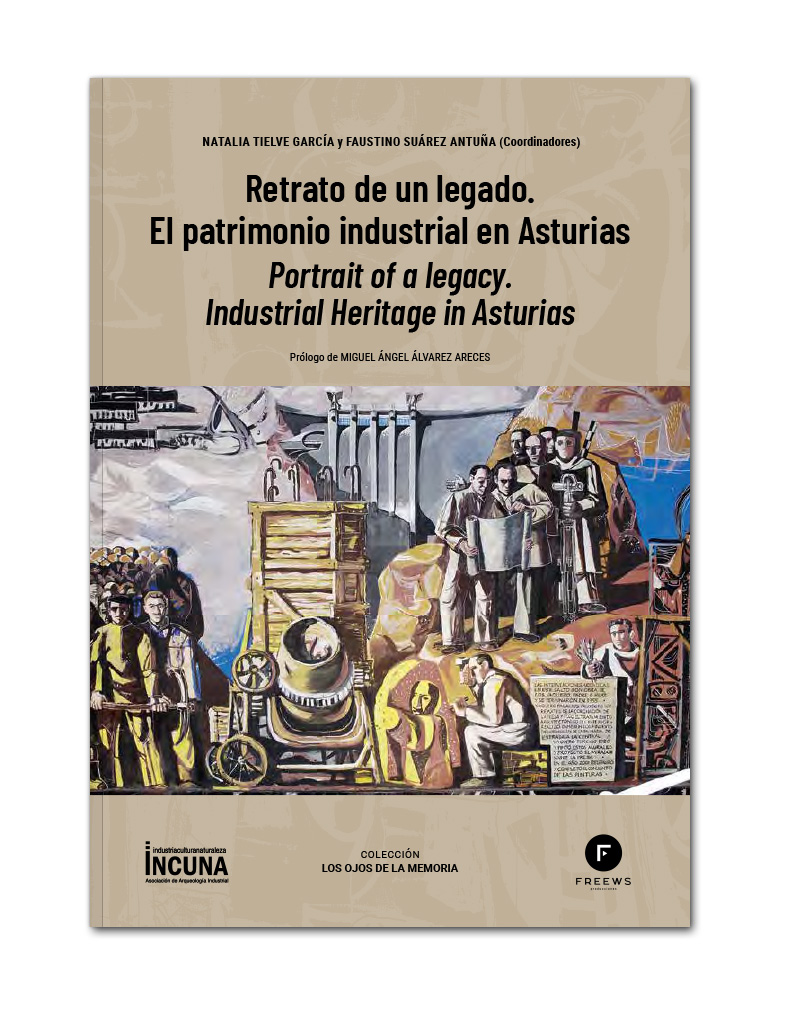
Tielve García, Natalia y Suárez Antuña, Suárez (Coords.). Retrato de un legado. El patrimonio industrial en Asturias. Gijón: CICEES e INCUNA, 2023.
![]()
Fernández García, Ana María y Pombo, Fátima (Coord.). Tesoros del día a día Iconos del diseño español para lo cotidiano. Oviedo: Universidad de Oviedo, 2022.

Tielve García, Natalia y Suárez Antuña, Faustino. “La sociedad ibérica del nitrógeno. Arquitectura y patrimonio industrial”. Gijón: CICEES e INCUNA, 2023.

Domínguez Rodríguez, Rubén y Fernández García, Daniel. “Baterías de cok de Ensidesa (Avilés): una mirada multidisciplinar a un bien cultural vulnerable”. Avilés: Centro de Estudios del Alfoz de Gauzón (CEAG), 2023.

Fernández García, Ana María y Pombo, Fátima (Coord.). Pull up a chair and swing with the cultural heritage. Oviedo: Universidad de Oviedo, 2022.
Congress and seminars
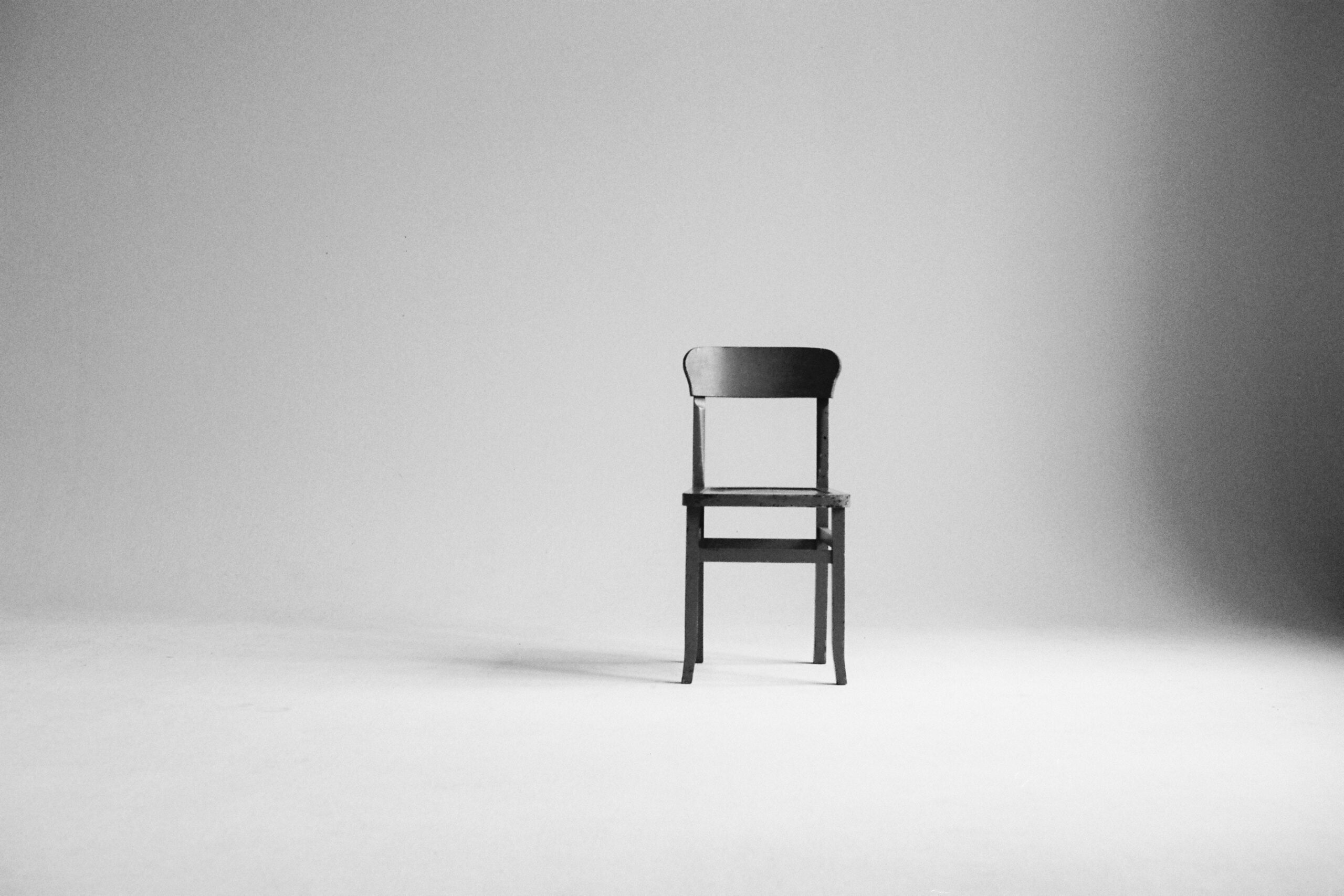
- X Jornadas Arte y Ciudad. Facultad de Ciencias de la Información de la Universidad Complutense de Madrid | 17-19/4/24 | Marina Castro Cabero, ponente
- I Congreso Internacional de Jóvenes Investigadores AsHisCom | 9-10/5/24 | Marina Castro Cabero, ponente
- XV Jornadas de Conservación y Restauración de Bienes Culturales «Mecenazgo y conservación-restauración del Patrimonio Industrial». Escuela Superior de Arte del Principado de Asturias (ESAPA) | 15-17/4/24 | Rubén Domínguez Rodríguez, ponente
- I Simpósio de Paisagens Ribeirinhas – ES. Interfaces entre arte e arquitetura. Entidad Organizadora: LEENA (Laboratório de Extensão e Pesquisa em Arte). Universidade Federal do Espírito Santo | 4/24 | Renata Ribeiro dos Santos, ponente
- XV Jornadas sobre conservación y restauración de bienes culturales. ESAPA | 15-17/4/24 | Natalia Tielve García, speaker
- Fiat voluntas tuas. Tinos y desatinos en la gestión del patrimonio industrial en el Principado de Asturias. Museo de la Minería del País Vasco | 3/11/23 | Rubén Domínguez Rodríguez, ponente
- La casa, intimidad y nuevos usos del espacio doméstico, UPV | 19-20/10/23 | Ana María Fernández García, speaker
- IX Congreso Internacional El Género Distópico: lecturas e interpretaciones sociológicas | 6-8/10/23 | Enrique Meléndez Galán and Marina Bargón García
- Jornadas Internacionales de INCUNA | 28-9/23 -1/10/23 | Natalia Tielve García, member of the organizing and scientific committee | Natalia Tielve García, speaker
- Jornadas Internacionales de INCUNA | 26-30/9/23 | Natalia Tielve García, member of the organizing and scientific committee | Natalia Tielve García y Rubén Domínguez Rodríguez, Patricia Fernández Pastor, ponentes
- IV Congreso Iberoamericano del Mueble | 5-8/9/23 | Ana María Fernández García, comité organizador y científico | Ana María Fernández García and Carmen Bermejo Lorenzo, speakers
- CINCOMA. Congreso Internacional de Innovación en Comunicación y Medios Audiovisuales. Universidad de Salamanca y Universidad de Alicante | 27-29/9/23 | Llara Fuente Corripio, ponente
- Conferencia Internacional X CIRICE 2023 City and war / Città e guerra (Dipartimento di Architettura, Università di Napoli Federico II | 8-10/6/23 | Francesca Capano, ponente
- AMPS: Heritages. Past and Present- Built and Social | 28-30/6/23 | Aida Villa Varela, ponente
- X Convegno internazionale: Città e guerra. Difese, distruzioni, permanenze delle memorie e dell’immagine urbana. Centro Interdipartimentale di Ricerca sull’Iconografia della Città Europea. Università degli Studi di Napoli Federico II | 8-10/6/23 | Massimo Visone, ponente
- X Convegno Internacionale Città e Guerra, Difese, distruzioni, permanenze delle memorie e immagine urbane. Università degli Studi di Napoli Federico II. CIRICE | 6/23 | Carla Fernández, ponente
- Mueble: territorio, tradición y nueva artesanía. Museu del Disseny y Fundació Ramon Pla Armengol | 4-6/5/23 | Llara Fuente Corripio, ponente
- Giornata internazionale di studi di Storia dell’Architettura: Luigi Vanvitelli: il linguaggio e la técnica. Università degli Studi di Napoli Federico II in occasione delle celebrazioni vanvitelliane | 1-3/3/23 | Massimo Visone, ponente
- 1º Congreso Territorios corresponsables, igualdad y espacio público | 30/11/22-2/12/22 | Ana María Fernández García and Carmen Bermejo Lorenzo, speakers
- Congreso IDEA2 | 12/12/22 | Ana María Fernández García
- I Congreso Narrativas Digitales y Virtualización del Patrimonio |24-26/10/22 | Enrique Meléndez Galán
- Utopian Studies Society Conference |10/22 | Enrique Meléndez Galán, ponente
- MSt in the History of Design Oxford | 15/10/22 University | Ana María Fernández García, speaker
- Cold (War) Embraces: Spanish American Artistic Exchanges, 1945-1990 | 20/10/22 University | Renata Ribeiro dos Santos, ponente
- Seminario de Arquitectura Latinoamericana siglo XX (LAC). Facultad de Arquitectura (UNAM), Docomomo e ICOMOS | 10/22 | Patricia Méndez, ponente
- Convegno internazionale: Adaptative Cities Through the Postpandemic Lens. Ripensare tempi e sfide della città flessibile nella storia urbana, promosso da AISU. Politecnico di Torino | 6-10/9/22 University | Massimo Visone, ponente
- Jornadas La ciudad y la utopía en el mundo Atlántico. Proyecto HISTOPIA II |20-22/6/22 | Enrique Meléndez Galán, ponente
- Congreso de TICCIH Perspectivas de Género para el Patrimonio Industrial. Trabajos de (No) Andar por Casa | 1-4/6/22 | Natalia Tielve García y Rubén Domínguez Rodríguez, ponentes
- VIII Congreso Internacional El género distópico: Lecturas e interpretaciones sociológicas | 23-25/9/22 | Enrique Meléndez Galán
- Design & Transience Conference | 9/9/22 | Ana María Fernández García y Carmen Bermejo Lorenzo
- Colóquio Crítica, mídias e memória. Décadas de 1940-1970. Programa de Pós-graduação em Arquitetura da Faculdade de Arquitetura e Urbanismo da Universidade Federal do Rio de Janeiro UFRJ | 9/22 | Patricia Menéndez
- 9° Encuentro de docentes e investigadores de Historia de la Arquitectura, el Diseño y la Ciudad. Instituto de Arte Americano e Investigaciones Estéticas “Mario J. Buschiazzo” (IAA – FADU – UBA) | 17-19/8/22 | Patricia Méndez, ponente
- 10.º Congreso Internacional de CEISAL. Consejo Europeo de Investigaciones Sociales de América Latina. CEISAL | 13-15/6/22 | Renata Ribeiro dos Santos, ponente
- I Primer Macrocongreso Internacional de Ciencias y Humanidades | 14-16/3/22 | Carla Fernández, ponente
- Convegno internazionale: IFDP. International Faculty Development Programme. Chandigarh University of India | 2022 | Massimo Visone, ponente
Seminario EsArt
EsArt Seminar #art #architecture #crisis Views from heritage
2022

download the poster and program
EsArt 3RMoMo seminar
Seminario EsArt centrado en el proyecto Recover, Rethink and Revalue the Modern Movement in Asturias. Architecture and Design (1939-1975).
2023

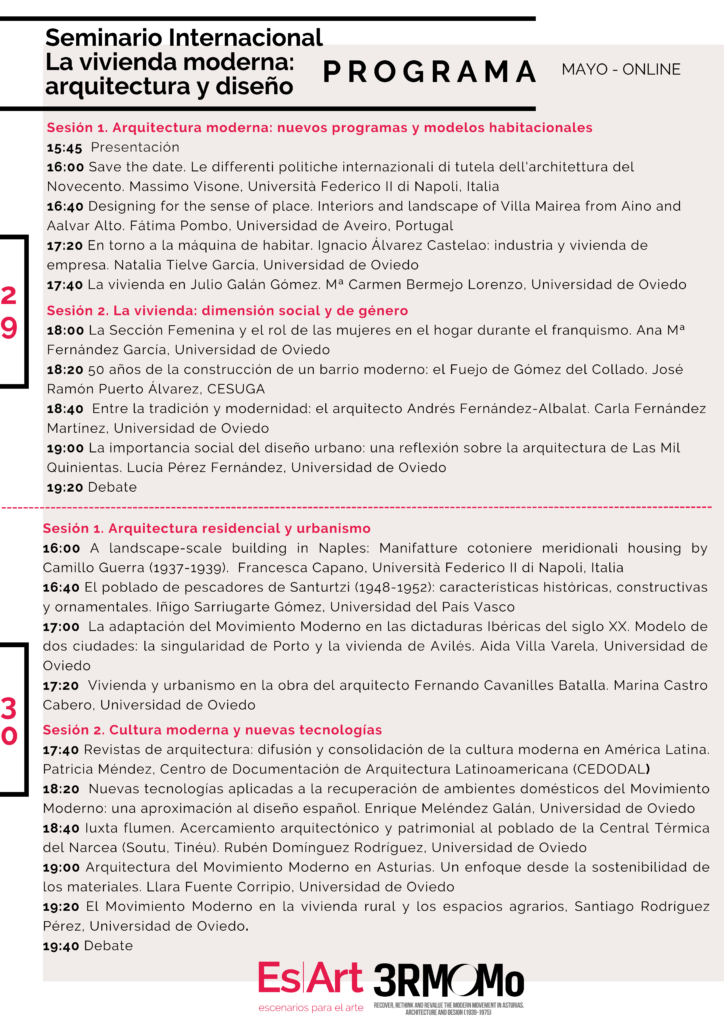
download the poster and the interactive program
EsArt 3RMoMo seminar
Seminario Internacional EsArt
La ciudad moderna y los equipamientos: entre la arquitectura y el diseño
2024
Transference
- DOCUWEB PATRIMONIO INDUSTRIAL | Natalia Tielve García as scientific coordinator
- PRESENTACIÓN DEL LIBRO “RETRATO DE UN LEGADO. EL PATRIMONIO INDUSTRIAL EN ASTURIAS”
| 17/11/23 | Natalia Tielve García and Faustino Suárez Antuña
- CONFERENCIA EN EL MUSEO DE LA MINERÍA DEL PAÍS VASCO
| 10/11/23 | Rubén Domínguez Rodríguez
- XVIII ENCUENTROS DE PATRIMONIO MINERO DE SANTA MARÍA DEL MAR
| 11/10/23 | Rubén Domínguez Rodríguez
- PREMIOS PRINCESA DE ASTURIAS | 12/10/23 | Natalia Tielve García and Renata Ribeiro Dos Santos
- NOCHE DE LOS INVESTIGADORES Y LAS INVESTIGADORAS DE LA UNIVERSIDAD DE OVIEDO. ACTIVIDAD CiudadEsArt-E | 29/9/23 | Enrique Meléndez Galán, Llara Fuente Corripio, Lucía Pérez Fernández and Marina Castro Cabero | We carry out a question game with Genially, where we can choose materials or architectural features (delivered in the form of cards) from different works of the Modern Movement in Asturias. With the cards collected, a city is created, more or less sustainable, depending on the correct answers, through the DALL-E AI for the assistant.
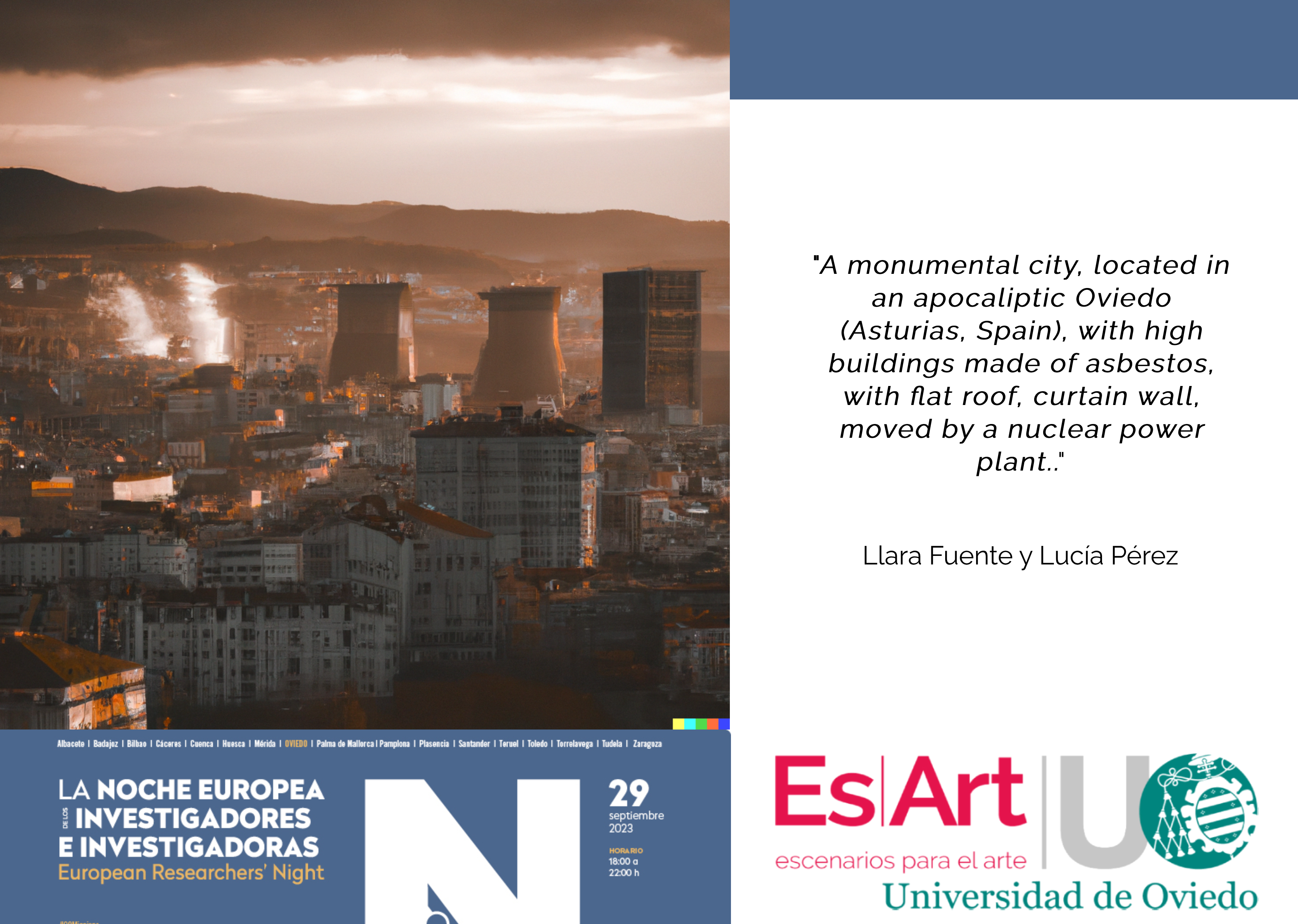
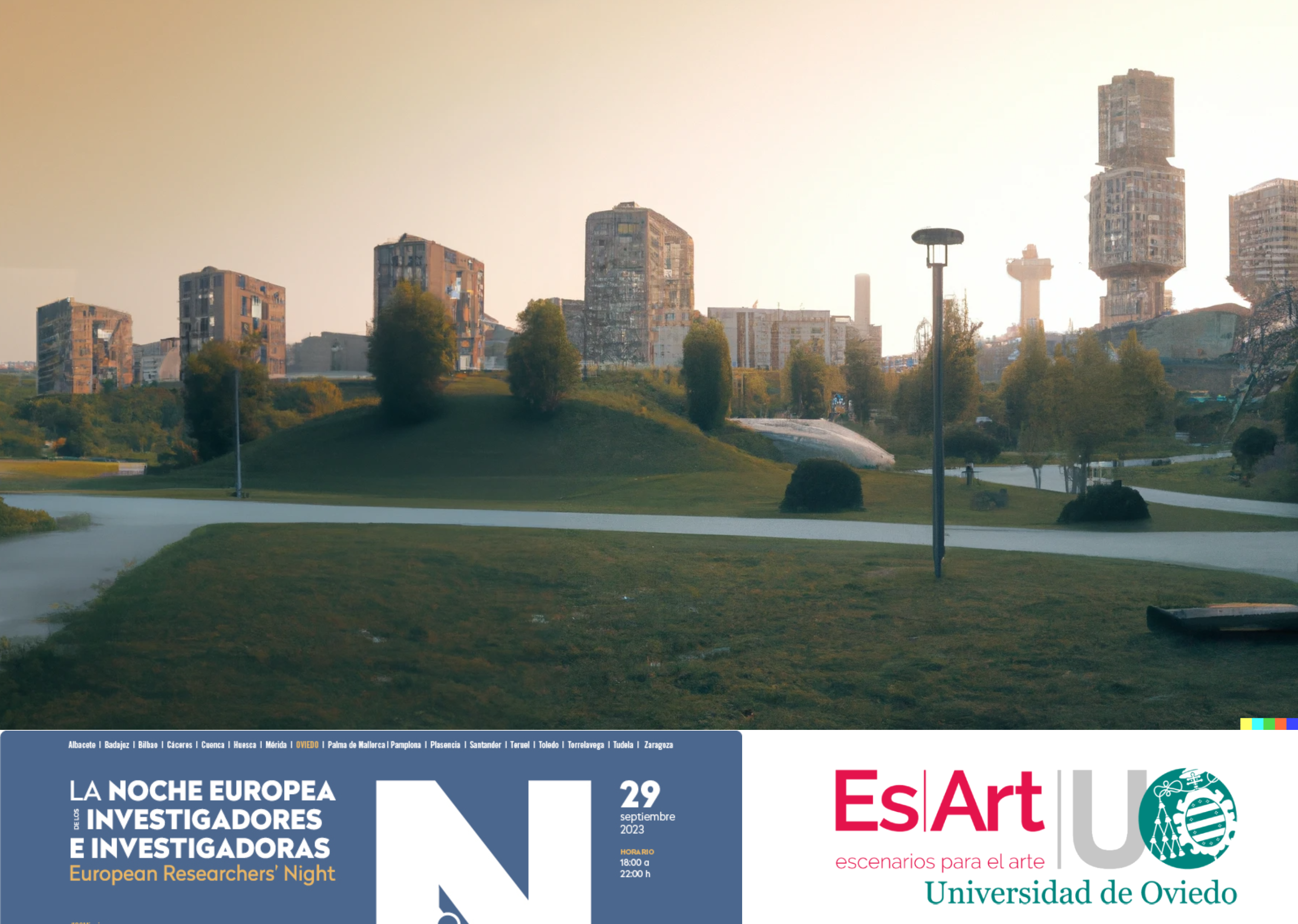
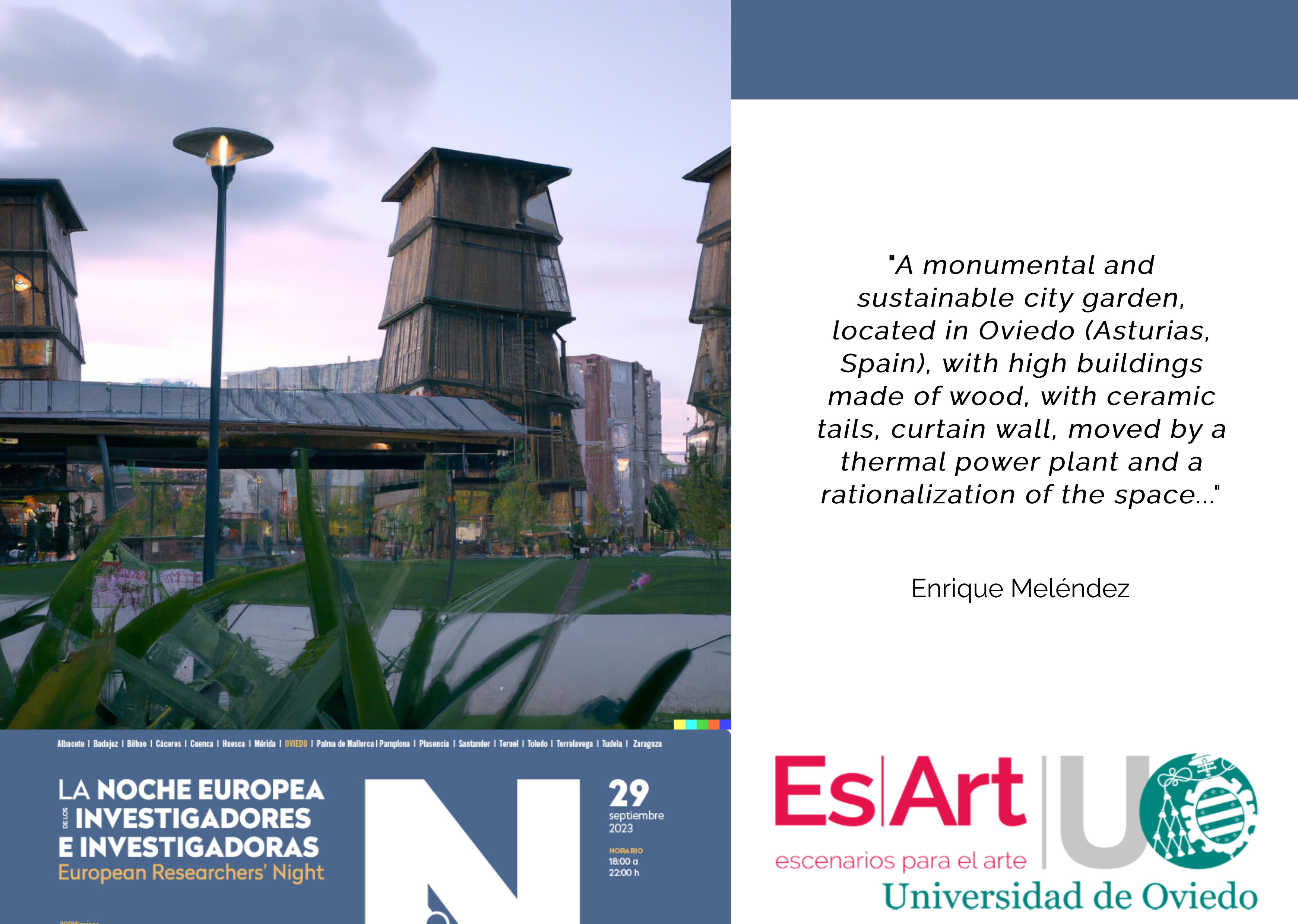
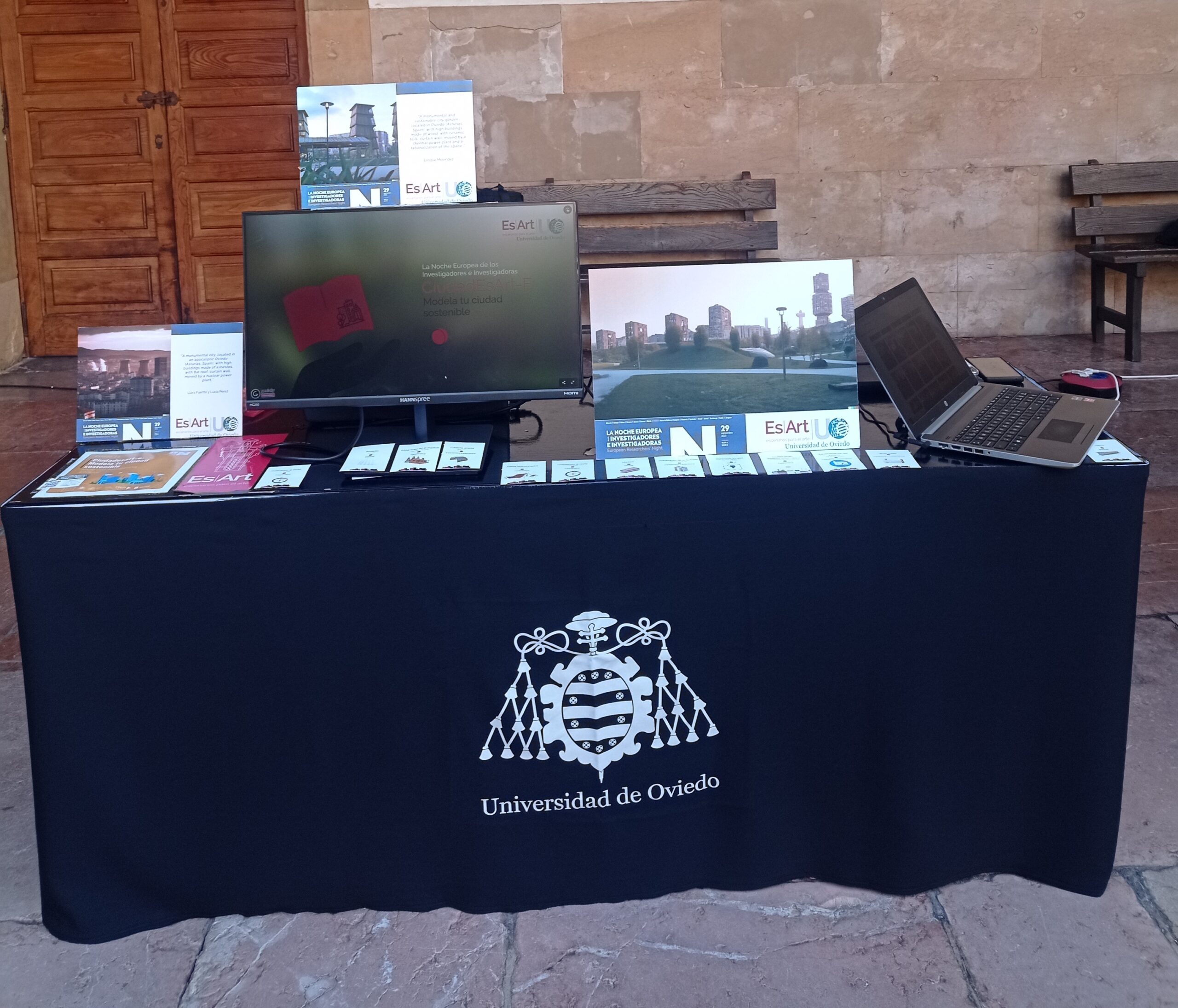
- PROYECTO DIDÁCTICO “EL MUSEO PORTÁTIL DEL DISEÑO ESPAÑOL” | Activity linked to the publication Tesoros del día a día. Iconos del diseño español para lo cotidiano. The activity consists of an exhibition inspired by Marcel Duchamp's portable museum with a game of questions that is carried out in a group. This is an adaptable activity to suit all educational levels.
- I FERIA DE LA CIENCIA Y LA INNOVACIÓN DE ASTURIAS | 17/11/22 | Ana María Fernández García, Renata Ribeiro and Llara Fuente Corripio | Activity linked to the publication Treasures of the day to day. Icons of Spanish design for everyday life

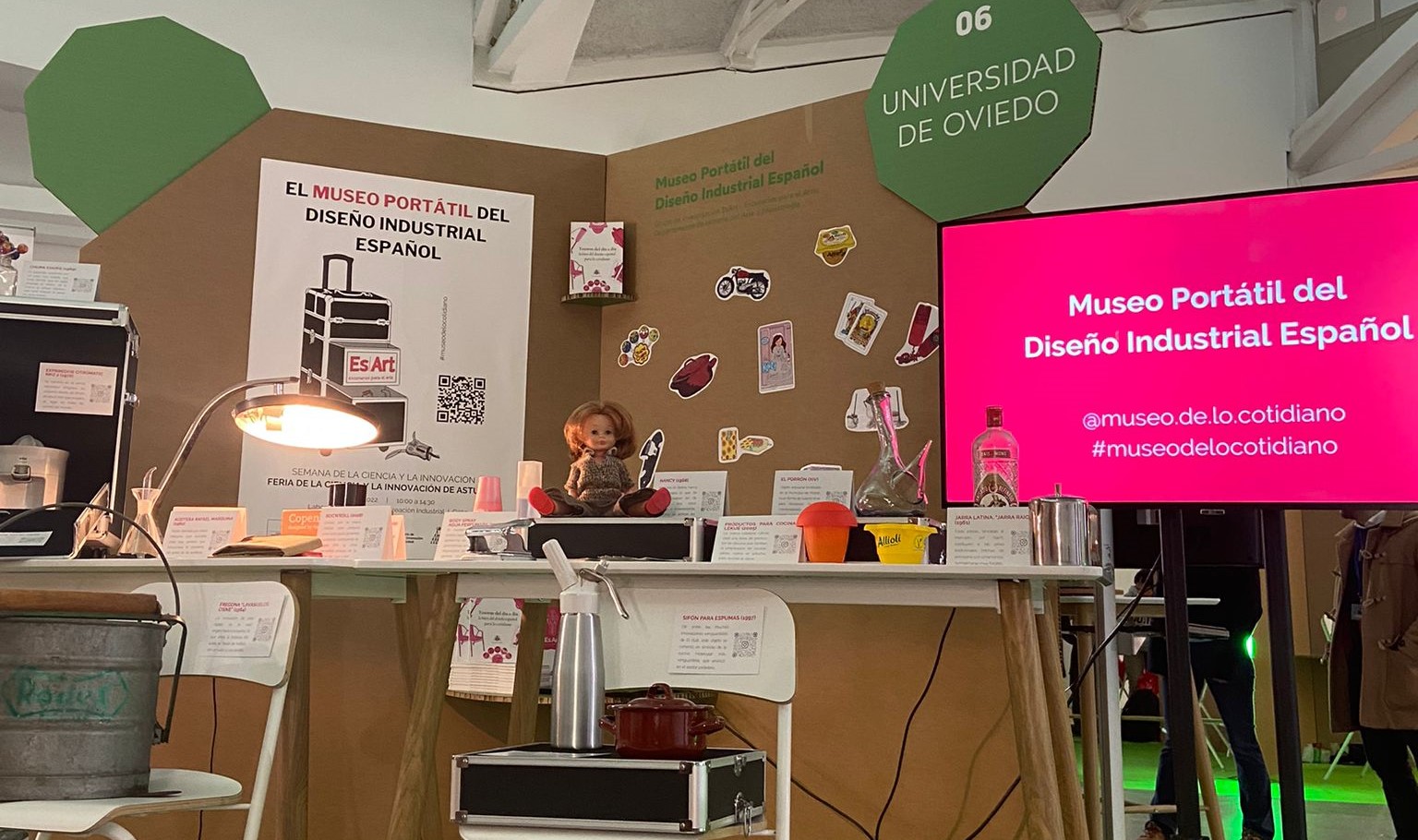
- SEMANA NEGRA DE GIJÓN | 12/7/23 | Rubén Domínguez Rodríguez and Natalia Tielve García
- JORNADAS DEL MUEBLE | 4-6/5/23 | Ana María Fernández García
- CÁTEDRA DE CINE DE AVILÉS | 30/5/2023 | Rubén Domínguez Rodríguez
- PRAGUE HERITAGES. PAST AND PRESENT – BUILT AND SOCIAL | 28-30/6/23 | Aida Villa Varela
- JORNADAS DE INNOVACIÓN DOCENTE | 10-11/5/23 | Team EsArt
- JORNADAS SOBRE EL PATRIMONIO INDUSTRIAL Y MINERO EN LA COMARCA DE LA MONTAÑA CENTRAL DE ASTURIAS: EL POBLADO MINERO DE BUSTIELLO | 17-20/4/23 | Rubén Domínguez Rodríguez
- PRESENTACIÓN DEL LIBRO BEMJAMÍN MENÉNDEZ: UN ARTISTA VITAL| 2 y 30/2/23 | Marina Castro Cabero
- PRESENTACIÓN DE LA PUBLICACIÓN “LA XATALARIFA. 10 AÑOS DE AGITACIÓN ARTÍSTICA EN LA CULTURAL RURAL ASTURIANA” | 28/11/22 | Renata Riberio, Aida Villa and Santiago Rodríguez
- MESA REDONDA PATRIMONIO INDUSTRIAL DE AVILÉS. PASADO, PRESENTE Y FUTURO | 21/12/22 | Natalia Tielve García and Rubén Domínguez Rodríguez
- JORNADAS CULTURALES DE INVIERNO EN ESPACIO PORTUS | 28-30/12/22 | Rubén Domínguez Rodríguez
Resources

3D RESOURCES (WORKS OF THE MODERN MOVEMENT)
Compilation of 3D resources for free use for consultation, monitoring, creation of replicas for typhological purposes, virtual reality, etc.
MAPA INTERACTIVO. ARTE EN EL ESPACIO
Compilation of some of the elements studied by the members of the EsArt group. You can locate them by category on the map or access the files of some of them and learn about their data, history, photographs, project and bibliography.
Heritage
Investigation
Divulgation
